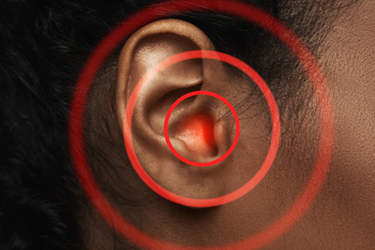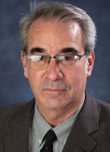What's Needed To Keep Tinnitus Research From Going Quiet
A conversation with American Tinnitus Association Board Member Marc Fagelson

Finding effective treatments for tinnitus has often been circuitous and frustrating for many patients, characterized by a test-and-see approach. Because, as researchers understand the condition, tinnitus has no known well-established causes (other than exposure to loud noise) and as yet has no FDA-approved drugs designed specifically to treat it.
Because of this conundrum, the American Tinnitus Association is actively supporting researchers in pursuing treatments, even cures, through their grant program that provides seed funding for researchers, some of whom intend to bring their drug or device development into human trials. In this interview, Marc Fagelson, Ph.D., a leading tinnitus expert, explores the current tinnitus treatment landscape and what can be done to improve outcomes for patients.
Today, what can tinnitus patients expect when it comes it available therapies?
Imagine that you're in a foreign country and you go into a produce market… and everything you look at is unknown to you. It's unusual and you're just trying to find a piece of fruit. Before you walked into the store, the greeter out front said, “You probably aren't even going to like any of the fruit.” Some people just start picking things out. They just go from one to the other until they get so discouraged they give up. Other folks try to stick with one thing, and they either like it or they don't. A lot of people just look at the selection and say, “I can't deal with this unless I get some advice.”
Now, imagine that’s a tinnitus patient — not a shopper. And you can just imagine the frustration, the loss of hope, the disappointment that an individual might feel in such a case as they are faced with what seems an impossible choice in the face of evidence that is mostly negative.
One of the things that I think is crucial for us as a profession is we've got to do a better job of matching patients to interventions. We need to understand that patient, and we need to understand all those choices, and we need to figure out ways to get people to the right counter, to the right part of the produce market so that they can find something that is “right” for them.
How then can researchers identify and bring more applicable therapies to patients?
One of the big things that we're doing is subtyping patients, identifying different patient groups and types. There are patients who have very powerful psychological comorbidities. There are others for whom diet and allergy might provide a great avenue for intervention. There are some who have hearing loss, and we need to manage their hearing loss as well. There are even genetic components; that's yet another layer.
When we say “subtyping patients” we do not necessarily mean profiling them but, rather, really discovering what makes different patients need different things so that we can match them with specific interventions that have the highest probability of working.
Is some of the failure in finding applicable treatments or cures rooted in this oversight?
The idea would be that we can raise the probability of success with interventions if we target them for the people we’ve learned are most likely to respond to the interventions with the best outcomes. And I think at some point you find a critical mass of information or data so that now you can say, "You know what? I don't even need to do some of the testing on this person. I know that person's going to respond well to intervention A or B.” And at some point, you get enough data so that you can start making those predictions with some reliability.
Another layer in finding a treatment or cure is to grow the pool of providers and principal investigators in clinical trials. What is ATA’s view of the landscape?
How do we get the people who are students now and how do we get them invested in not just the process of caring for these patients but really wanting to chase down the most challenging cases? Not everybody wants to do that. We need to do a better job as teachers and experienced clinicians so that the next generation of providers has a greater level of confidence and a greater level of self-efficacy in their ability to do this job. It is a challenging situation for both patients and providers.
I think a lot of times when people get engaged in this area, they don't want to get out. It can be, I'm not going to say gratifying, but it's very challenging. You know what it's like when you overcome a challenge and you know what it's like when you beat your own expectations for yourself. And this is an area where we can really help students get that. ATA is devoting funding with the intent to support student and young investigator scholarships and by supporting their ability to travel to meetings to meet like-minded individuals and perhaps other professionals who can give them additional strategies.
The ATA funds both junior and senior researchers alike. Why is this a priority?
When one is reviewing some of these submissions, it is important to remember that we are charged with funding studies that are likely to be finished by the study team. If a study team has a good track record, if they've been prolific, if they've always gotten the job done, maybe even gone the extra mile on some investigations, then as reviewers we are a bit more confident they're going to get it done. And they usually have crafted things in a clearer way than a junior investigator would, simply because they've been through the review process more times.
Image for clinical and bio
That doesn't mean that there aren't a lot of junior investigators out there with a lot of really good stuff cooking. The problem is they may not express it quite as well. There may not be the infrastructure at their facility that the other team has been able to put together, but we want them. We want them to have the opportunity because in that way, not only will their work be continued, they'll probably be beholden to us. There is a lot of that kind of back and forth in our profession. The hearing science community is pretty small, so we all kind of know each other after a while.
The NIH grants are almost always going to well-funded researchers. I like to think we can help a lot of people get on that track, at the same time we bring them into the ATA fold, so to speak, so they can review and mentor other study teams.
What are some of the ongoing research efforts in tinnitus that ATA has funded?
There's a lot of interesting work we funded in the new round. One proposal centered on an endocannabinoid study where tinnitus patients are going to be compared to controls who don't have tinnitus. With regard to endocannabinoid levels in the bloodstream over time, researchers are asking whether there are specific neurotransmitters that turn out to be more important than others. In general, patients with tinnitus and patients who've been exposed to noise don't have as much GABA available in the central nervous system as they should. Well, GABA is a very powerful inhibitory neurotransmitter. Maybe tinnitus is a side effect of a lack of neural inhibition that had been there prior to some noise exposure.
Tinnitus treatments include drug therapies, devices, and even various types of counseling. What do you anticipate being the most effective approach?
We know that any drug intervention or device will have a better outcome if it's accompanied by effective counseling. Counseling, cognitive behavioral therapy, and self-efficacy training can be adapted in many different ways to different patients. And so, the trick to get the next generation of providers hooked on this topic area is to show them the beauty and the value of having a real dialogue with a patient rather than a unidirectional dispensation of information. And a lot of people are scared of that kind of dialogue, especially students.
What are patients' interests in or acceptance of wearables and other digital health tools and technologies?
Wearable devices come in many flavors, and it’s pivotal to first address hearing loss when a patient suffers from tinnitus, too. Hearing aids can reduce communication listening effort and provide patients access to environmental sounds they would miss, such as birds tweeting and leaves rustling. These sounds can provide tinnitus masking and a sense of comfort.
Some devices are more invasive, employing stimulation of another body part (i.e. the tongue or wrist). In the U.S., patients bothered by tinnitus who seek help often expect a pill or a device to facilitate coping; many patients believe counseling is not a reasonable intervention despite literature evidence. However, as I noted, this situation affirms the need for younger providers to be trained to effectively counsel, thereby improving outcomes derived from the use of a device, a drug, or any other intervention.
How does the ATA’s patient advocacy activities support or become involved in the development and study of those drugs and devices?
Drug development is a multi-year, multi-million-dollar endeavor; hence, ATA’s support would be limited to pilot data. But we can get somebody going so that they can get there. We can get them to the point where they've got some reliable, well-acquired pilot data to move on to the next level of funding.
Clinical research, however, is a strong area for ATA, as we support investigations on a wide range of topics, from characterizing a tinnitus sound and providing counseling to implementing interventions that employ tailored sounds and developing clinical instruments to measure tinnitus effects.
For more information about the ATA and its funding opportunities, visit their website.
About The Expert:
 Marc Fagelson, Ph.D., is a professor of audiology at East Tennessee State University in Johnson City, TN. He graduated with a Master’s in audiology from Columbia University in New York City and a Ph.D. in hearing science from the University of Texas – Austin. In addition to teaching, he supervises students in audiology and specialty tinnitus clinics. He initiated activity in the James H. Quillen VAMC tinnitus clinic in 2001 with more than 1,200 currently enrolled patients. He published and contributed to more than 50 articles, co-edited three texts, and provided more than 100 presentations at national and international meetings. Fagelson wrote and published an animated video on the topic of tinnitus, its effects, and management options through the TED-ed educational platform. The video has been viewed more than 7.1 million times since its publication in August 2020. He currently serves as the chair of the American Tinnitus Association’s Scientific Advisory Committee.
Marc Fagelson, Ph.D., is a professor of audiology at East Tennessee State University in Johnson City, TN. He graduated with a Master’s in audiology from Columbia University in New York City and a Ph.D. in hearing science from the University of Texas – Austin. In addition to teaching, he supervises students in audiology and specialty tinnitus clinics. He initiated activity in the James H. Quillen VAMC tinnitus clinic in 2001 with more than 1,200 currently enrolled patients. He published and contributed to more than 50 articles, co-edited three texts, and provided more than 100 presentations at national and international meetings. Fagelson wrote and published an animated video on the topic of tinnitus, its effects, and management options through the TED-ed educational platform. The video has been viewed more than 7.1 million times since its publication in August 2020. He currently serves as the chair of the American Tinnitus Association’s Scientific Advisory Committee.
